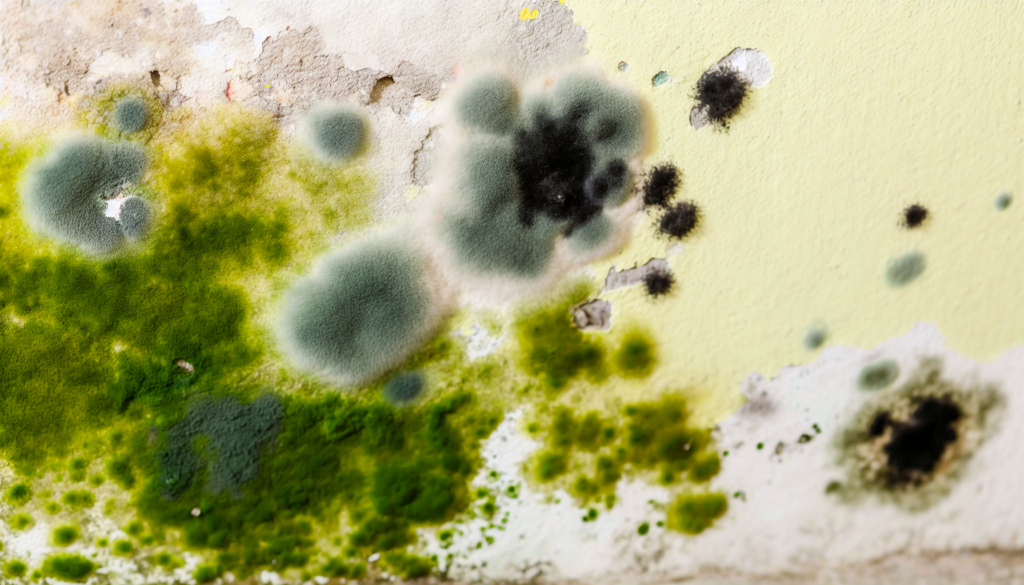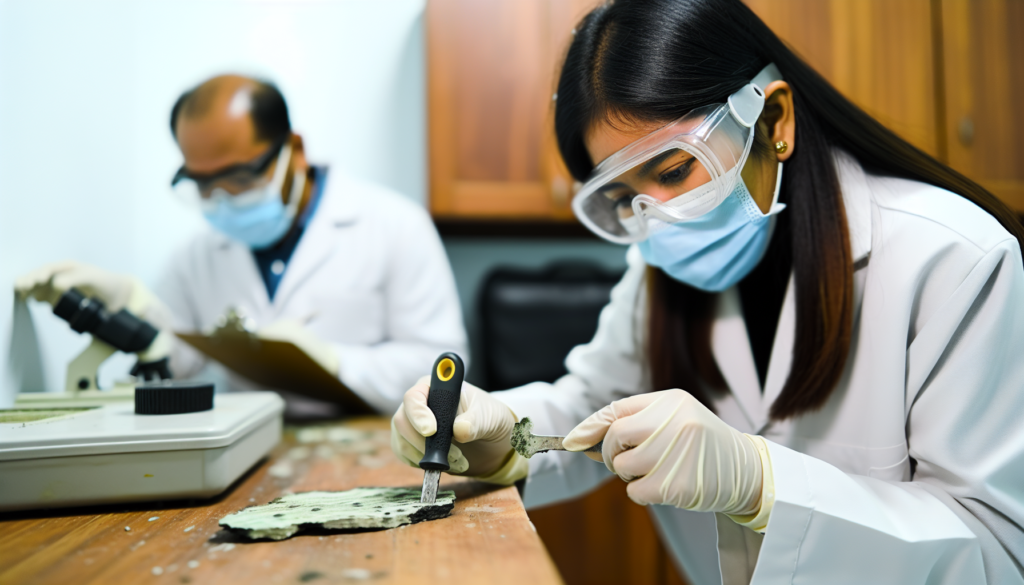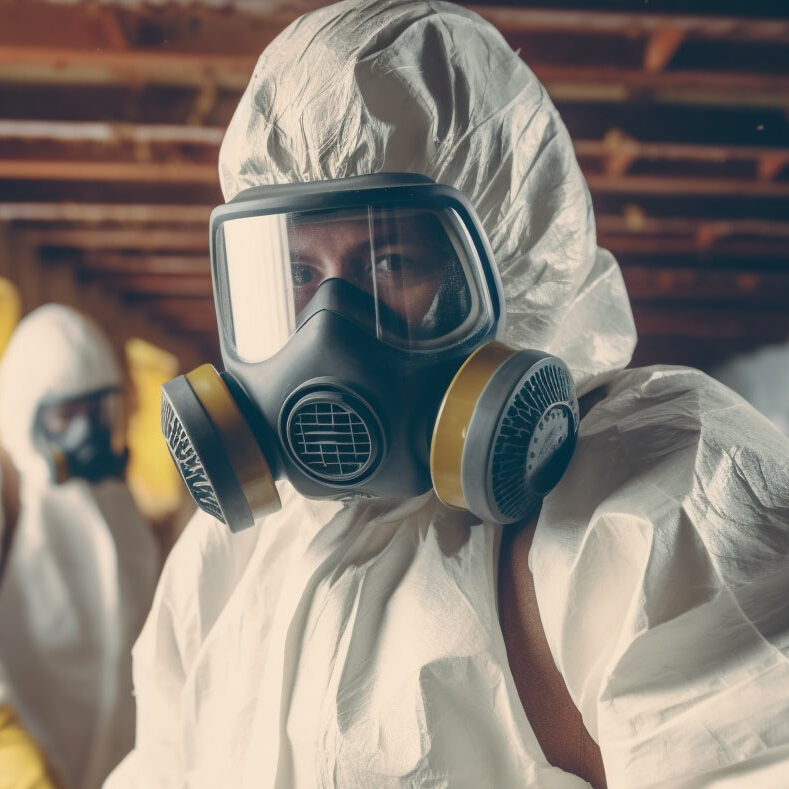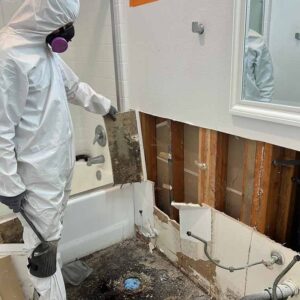Concerned about mold at home but unsure how to confirm its presence? This guide cuts through the confusion with straightforward mold testing techniques. From spotting early mold signs to choosing between DIY and expert assessments, you’ll gain the knowledge needed to tackle mold head-on. We’ll cover how to interpret mold testing results and outline your next steps, ensuring you’re well-equipped to maintain a mold-free home with proper moldtesting.
Key Takeaways
- Mold testing, distinct from an inspection, involves collecting and analyzing samples to identify mold type and extent, enabling effective remediation; early detection prevents health issues and reduces remediation costs.
- Mold presence can be indicated by visible growth, health symptoms, or persistent musty odors; recognizing these early signs is crucial to address the problem before it escalates.
- Accurate mold testing requires selecting the appropriate test kit, strictly following instructions for sample collection, and understanding when lab analysis is needed to guide remediation or professional intervention.
Understanding Mold Testing

An integral part of maintaining a healthy living environment is mold testing. It provides a means to:
- Identify mold growth in your home
- Appreciate the significance of early detection
- Make an informed decision about testing for mold yourself or enlisting professional help.
Understanding mold testing fundamentals empowers you to take necessary action, whether you’re dealing with visible mold growth or suspect a hidden issue.
Defining Mold Testing
Mold testing involves collecting and analyzing samples to determine the type and extent of mold in your home. This gives you a clear picture of the mold problem you’re dealing with, enabling you to take appropriate action.
It’s different from a mold inspection, which focuses on identifying visual signs of mold growth. While testing tells you what kind of mold is present and how much, inspection reveals where the mold is growing.
The Importance of Detecting Mold Early
Early mold detection is a critical factor in managing mold issues. Identifying a mold problem early simplifies the process of addressing it. Early detection allows for prompt removal and helps prevent potential health issues. Moreover, it minimizes the need for expensive remediation procedures, saving you time and money in the long run.
Professional vs. DIY Testing
When it comes to mold testing, you have two options: DIY testing or hiring a professional mold inspector. DIY kits can be cost-effective for initial evaluations, but they may not provide the same level of accuracy as professional testing. On the other hand, professional mold inspectors use specialized equipment and their expertise to accurately detect mold growth and identify the type of mold present, enabling the development of an effective remediation plan.
Indicators That You Need Mold Testing

Mold infestations can be sneaky, often occurring in places that aren’t immediately visible. However, certain signs might indicate that your home needs mold testing. These include visible mold growth, health symptoms related to mold exposure, and persistent musty odors.
Recognizing these signs early can help you take action before the problem escalates.
Visual Clues of Mold Presence
Visual indicators are often the first signs of a mold problem. These can include discolored or fuzzy spots on surfaces, particularly black, green, brown, or white patches. While not all discolorations are mold, if you notice these signs, it’s wise to test for mold to ensure your home is safe and healthy.
Health Symptoms Related to Mold Exposure
Health symptoms such as respiratory issues, skin irritation, and headaches can also indicate the presence of mold in your home. These symptoms are often the result of an allergic reaction to mold spores. If you or anyone in your household experiences these symptoms, especially if they worsen at home, it’s worth testing for mold.
Musty Odors and Persistent Allergies
Musty odors and persistent allergies can be another sign of a potential mold issue in your attic or crawl space. If your home has a persistent musty smell, or if you or your family members experience ongoing allergy symptoms, it might be time to test for mold.
These signs can often indicate hidden mold growth, which can be more challenging to detect, so it’s crucial to notice mold growth as soon as possible.
Selecting the Right Mold Test Kit

Choosing the right mold test kit involves understanding the types of kits available, carefully following instructions, and knowing when to send samples to a lab for analysis. Remember, the goal is to get accurate results that can guide your next steps, whether that’s addressing a minor mold problem yourself or calling in professionals for a major mold infestation.
Types of Test Kits Available
Test kits vary in terms of the methods they use to collect and analyze samples. Some kits are designed for air sampling, while others are meant for surface sampling or bulk sampling. Each type of kit has its advantages and limitations, so it’s essential to choose a kit that’s suitable for your specific situation.
Reading and Understanding Test Kit Instructions
Appropriate use of mold test kits, including the specific mold test kit you choose, is pivotal in obtaining accurate results. This necessitates a careful reading and adherence to the instructions that come with the kit. Missteps during the testing process can lead to inaccurate results, which could either give you a false sense of security or cause unnecessary panic.
When to Send Samples to the Lab
Once you’ve collected your samples, you might need to send them to a lab for analysis. This provides a more detailed assessment of your mold problem and can guide you on the next steps to take. However, not all samples need to be sent to a lab. Your test kit instructions should provide guidance on when lab analysis is necessary.
Steps in the Mold Testing Process

The mold testing process involves several steps, beginning with preparing your environment to perform mold testing. Then, you’ll need to collect samples and, if necessary, send them to a lab for analysis. Understanding each step can help you accurately test for mold and get reliable results.
Preparing the Environment for Testing
Environment preparation is vital before commencing the testing. This includes closing windows and doors and maintaining a stable indoor climate. These steps, similar to the guidelines provided by the Environmental Protection Agency, are essential for ensuring that your test results accurately reflect the mold conditions in your home.
Collecting Samples
Collecting samples is a key step in the mold testing process. Depending on your test kit, you might need to collect air samples, surface samples, or bulk samples. Following the instructions carefully can help you collect samples correctly and avoid contamination.
Sending Samples to an Accredited Lab
If your test kit instructions recommend it, you’ll need to send your samples to a lab for analysis. This step can provide you with more detailed information about your mold problem, including the type of mold present and its concentration.
Interpreting Mold Test Results

Interpretation is required once you receive your test results. This involves understanding the airborne concentrations of mold, identifying mold types and their associated risks, and determining what to do next based on your results.
Understanding Airborne Concentrations
Your test results will indicate the concentration of mold spores in the air. This information can help you gauge the severity of your mold problem and guide your remediation efforts.
Identifying Mold Types and Risks
Your test results will also identify the types of mold present in your home. Understanding these types can help you assess the health risks and determine the best remediation methods.
Next Steps After Receiving Results
After interpreting your results, deciding on the next steps is necessary. This might involve cleaning up minor mold issues yourself or hiring professionals for more extensive problems.
Either way, responding promptly to your test results can help prevent further mold growth and protect your home’s health.
Preventing Future Mold Issues
Especially in the case of mold, prevention holds a higher place than cure. By taking steps to prevent mold growth, you can maintain a healthy living environment and avoid the hassle and expense of mold remediation.
Addressing Moisture and Humidity
For mold growth prevention, moisture and humidity control is of utmost importance. By maintaining your home’s humidity levels within a certain range, you can create an environment that’s less conducive to mold.
Regular Inspections and Maintenance
Regular inspections and maintenance can help you detect potential mold issues early. By keeping an eye out for signs of mold and addressing any issues promptly, you can prevent minor problems from turning into major ones.
Remedial Measures Post-Testing
Post mold testing, it’s probable that you’ll have to undertake some remedial measures to remove mold. Depending on your test results, this might involve cleaning up minor mold issues, making changes to prevent future mold growth, or calling in professionals for a major professional mold test and addressing major mold problems.
Summary
In summary, mold testing is a vital part of maintaining a healthy home. By understanding the importance of mold testing, recognizing the signs of mold, choosing the right test kit, and taking appropriate action based on your results, you can protect your home and your health from the dangers of mold.
Frequently Asked Questions
How can I test for mold in my house?
To test for mold in your house, you can do a quick and simple test by dabbing a swab in diluted bleach and applying it to the suspected area. If the spot quickly lightens or keeps coming back after cleaning, it’s likely mold. Alternatively, you can rely on your sense of smell to detect a musty odor, which is a common sign of mold growth.
What is the most accurate way to test for mold?
The most accurate way to test for mold is through surface sampling kits, which can test surfaces for mold growth and are typically more accurate than air sampling kits. It’s important to have a general idea of where mold might be hiding to make the testing process more targeted.
What are mold sickness symptoms?
Some common symptoms of mold sickness include nasal and sinus congestion, eye irritation, fatigue, brain fog, headaches, joint pain, and anxiety. Exposure to damp and moldy environments may cause a variety of health effects, from stuffy nose and wheezing to red or itchy eyes and skin.
Why is mold testing important?
Mold testing is important because it helps detect mold growth, understand the severity of the problem, and take appropriate action to prevent health issues and structural damage. Early detection is key to addressing the issue effectively.
What should I do after receiving my mold test results?
After receiving your mold test results, take appropriate action based on the results and professional guidance, which might involve cleaning up minor mold issues yourself or hiring professionals for more extensive problems.







